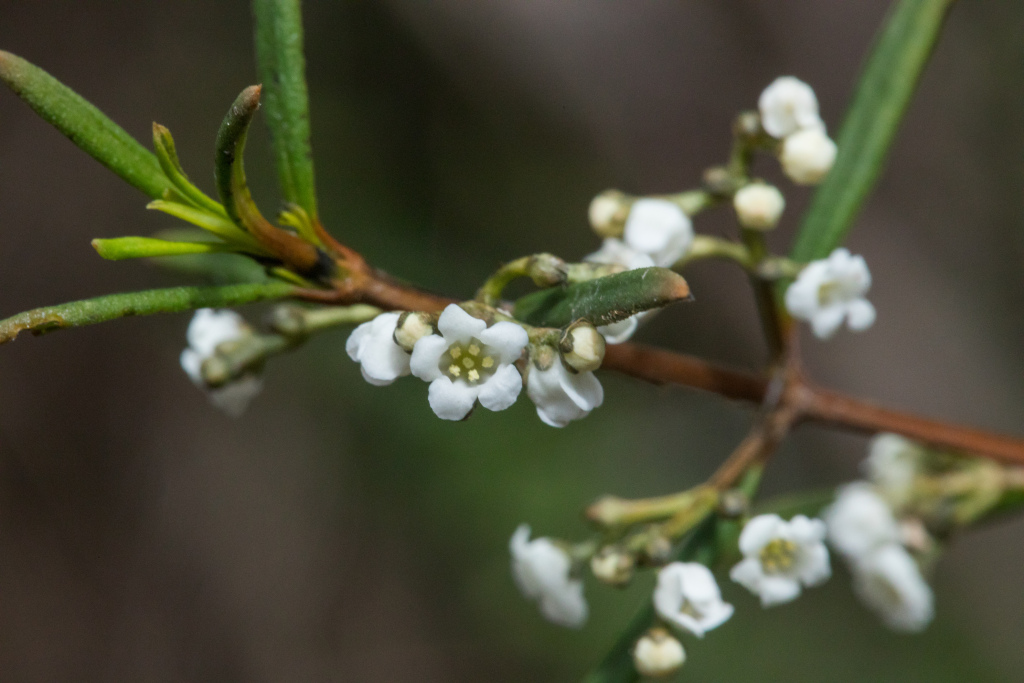Logania albiflora
(Andrews & Jacks.) Druce Narrow-leaf LoganiaErect dioecious shrub to c. 2 m high; branches usually angular, glabrous or slightly hairy. Leaves sessile, but with pseudopetioles 3–5 mm long; lamina almost linear to narrow-ovate, 20–55 mm long, 2–14 mm wide, lower surface densely papillate, upper surface glabrous to hispid, base attenuate, margin flat or recurved, apex acute to acuminate. Inflorescence typically more than 20 mm long, usually more than 3-flowered; flowers unisexual. Calyx c. 1 mm long, lobes ovate; corolla 2–3 mm long, tube 1.5–2.5 mm long, longer than lobes, lobes broad-ovate, rounded, outer and inner surfaces papillate; stamens inserted c. halfway up corolla-tube. Capsules 5–9 mm long. Flowers Sep.–Oct.
VVP, GipP, Gold, CVU, EGL, EGU, HSF, HNF, MonT, VAlp. Also Qld, NSW. Scattered, but locally common in eastern Victoria, on elevated, rocky (often granitic) substrates (e.g. Mt Buffalo, Mt Elizabeth and Mt Kaye, Howe Hill, Licola area) or in rocky riparian sites, with a disjunct occurrence in the Whipstick Forest near Bendigo.
Plants from the Bendigo area and a few lowland sites in East Gippsland are distinctive in having shorter (c. 20 mm long), quite linear leaves, and in this respect somewhat resemble L. granitica, L. ovata and L. linifolia.
Conn, B.J. (1999). Loganiaceae. In: Walsh, N.G.; Entwisle, T.J., Flora of Victoria Vol. 4, Cornaceae to Asteraceae, pp. 302–310. Inkata Press, Melbourne.
 Spinning
Spinning

